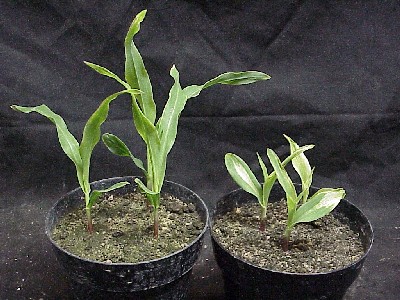Chapter 14: Applied Herbicide Physiology and Movement
14.6 Environmental Conditions and Crop Injury
Environmental conditions influence the potential for crop injury from soil active herbicides. In general crop injury from soil active herbicides is greatest under cool moist conditions due to several factors. Under cool conditions plant metabolism and therefore herbicide degradation is slowed resulting in greater concentrations of herbicide persisting in the plant for a longer period of time. This results in increased injury potential (Figure 5).

Under cool conditions, all plant biochemical processes are slowed including vegetative growth. As a result, plant roots and shoots do not grow rapidly through and out of a soil zone containing herbicide. This extended period of contact of the absorptive tissue with the herbicide results in increased herbicide uptake and therefore increased injury potential.
In addition, moist soil facilitates plant contact with herbicides through either mass flow or diffusion. Other things being equal, greater herbicide uptake and injury potential occurs under high moisture conditions.
Dormant Seeds
Soil active herbicides, with the exception of fumigants, have no effect on dormant seeds. Moisture absorption, and therefore herbicide absorption, by dormant seeds is minimal and therefore exposure of the living embryo of the seed to most soil applied herbicides is minimal. Soil moisture facilitates both seed germination and herbicide absorption, requirements for activity of soil active herbicides.
Review and Reflection